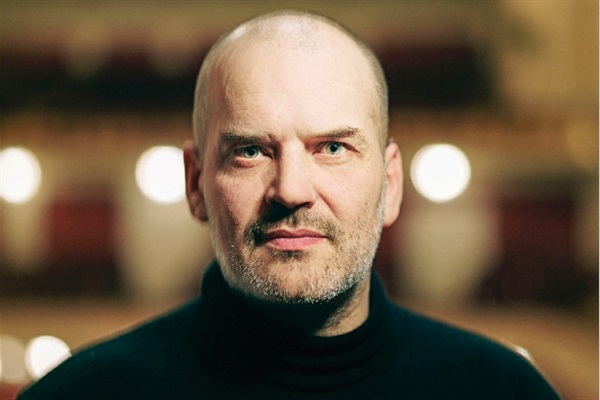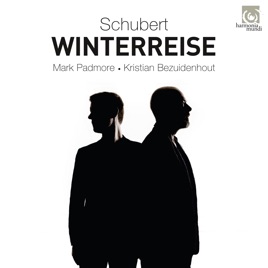 |
| Photo: Roger Thomas |
Everyone has heard the Schubert favourites Schuen and Heide chose, maybe hundreds of times, but Schuen and Heide made them feel fresh and personal. An den Mond D 259, illuminted with subtle restraint, Im Frühling D882, full-throated and free-spirited, Abendstern D806, gently contemplative. Schuen and Heide know how to programme, varying songs of introspection with exuberant outbursts like Der Musensohn D764. The second half of the recital was even better : a particularly tender Sei mie gegrüsst D741 and Dass sie hier gewesen D775. Together they demonstrated Schuen's range, which effortlessly reaches the upper limits of baritone, to near-tenor brightness. He's still young, but has huge potential - definitely a singer to follow. (Read more about him on this site)
Schuen and Heide have often explored less familiar parts of the repertoire, like their outstanding Frank Martin Sechs monologe aus Jedermann so it was interesting to hear how they'd do Mahler Lieder eines fahrenden Gesellen, which just about everyone has done, not always to best effect. This is very much a young man's adventure, as it was for Mahler himself, setting out on his own journey. Despite a slightly cautious start, understandable enough, Schuen soon got into his stride. Schuen's diction is agile, an energetic, even stride in his phrasing. The poet sets out, upset because he's been rejected by a girl, but his love may have been little more than teenage fantasy. Almost immediately he is drawn to Nature and the world beyond himself. "Ziküth, Ziküth" here rang strong and pure, as if modelled on hearing bird song ringing in the wild, for the bird symbolizes destiny - Siegfried , heading off down the Rhine, led by a wood dove in the forest. Thus revitalised, the poet looks ahead. Schuen breathed into the phrase "Blümlein blau! Verdorre nicht!" making the words glow with wonder. Anyone who's seen gentians in Alpine regions, growing out between rocks, knows exactly why they can feel miraculous. No surprise then that Schuen and Heide gave the second song Ging heut' Morgen über's Feld such heartfelt vigour. Flowing, decorative phrasing in "Wird's nicht eine schöne Welt?Zink! Zink! Schön und flink! Wie mir doch der Welt gefällt!"Sparkling piano figures lead into a new, more serene mood, where lines stretch smoothly, held for several measures, as if basking in Sonnenschein.
With "Ich hab' ein glühend Messer" the mood shifts, like sudden storm, descending on a mountain. The dark resonance in Schuen's lower register highlighted the drama. But yet again, Mahler doesn't dwell on angst: the drama here is almost as if the poet were reminding himself to be angry - as teenagers do - when he has in fact moved on. In the final song, Schuen showed the lyricism and tenderness in his timbre, which in many ways is even more impressive than the volume he can achieve when needed. The Lindenbaum reputedly has narcotic qualities, that can intoxicate those inhaling the scent of its leaves and flowers. Perhaps the poet might die (as suggested in Winterreise) but for Mahler, the song is lullaby. Sleep can refresh and re-invigorate. Schuen's style is direct, with clear-eyed focus, totally appropriate to this cycle.
Mahler's Rückert-Lieder are not a cycle, as such, and the sequence can be altered. Schuen and Heide put the more overt songs of love together forming a miniature cycle of their own, followed by Um Mitternacht, in which the poet confronts mortality, and Ich bin der Welt abhanden gekommen, in which the poet comes away from the cares of the world. The Rückert-Lieder are in an altogether more sophisticate league than Lieder eines fahrenden Gesellen, but Schuen and Heide rose to the challenge. Their performance here was the highlight of the whole evening. Lovely as these songs are, loveliness alone means little. What impressed me most was the emotional maturity and artistic insight Schuen and Heide brought to this interpretation, which can elude some bigger-name celebrities. A particularly beautiful Ich atmet’ einen linden Duft. Again, a Lindenbaum, whose scent is powerful, but invisible. Subtlety is of the essence : Schuen and Heide seemed to make the music hover, shaping lines without forcing them, Schuen breathing carefully into each phrase, using air itself, like an Äolsharfe. Vowel sounds surged, consonants softened. It is significant that Rückert's poem is almost minimalist, images suggested with as few words as possible. Similar gentleness in Liebst du um Schönheit. Rückert's lines are again deceptively simple, almost childlike. Schuen understands that less is more, allowing the song to reveal its purity as it unfolds.
Um Mitternacht thus operates as contrast, not only in purely musical terms, but also to emphasize meaning. If the poet dies, his dilemma is even more poignant if he had had a good life. While the other songs are near-lullaby, Um Mitternacht is an anthem, ringing out with impassioned dignity, connecting the individual to the cosmos. "Um Mitternacht hab' ich gedacht Hinaus in dunkle Schranken." All that separates life from death is the beating of the heart, "ein einz'ger Puls". An image of fragile humanity, reminding us that all the powers of this world can come suddenly to nothing. As so often in Mahler, bombast is inappropriate. Instead, humility and respect for something greater than the individual. "Herr über Tod und Leben Du hältst die Wacht Um Mitternacht!". Heide's lines are firm and steady : Schuen's voice rings with dignity and affirmation. Thus the logic of concluding with Ich bin der Welt abhanden gekommen : after the storm, the calm of true wisdom. The protagonist isn't actually dead, but has learned that wasting time on pettiness is futile. "Ich bin gestorben dem Weltgetümmel..... ich leb' allein in meinem Himmel, in meinem Lieben, in meinen Lied". This was an excellent performance, but in time, Schuen will develop and find even more in this group of songs.
Thus the logic behind the choice of encore, Urlicht, Mahler's setting of Nietszche, which he incorporated into his Symphony no 2, heard here in the version for voice and piano. In the symphony it serves as a transition between the "worldy cares" evoked in the qoutation of Des Antonius von Padua Fischpredigt in the previous movement and the resolution, the "resurrection" in the finale. "O Röschen rot!", an image of beauty that must, inevitably fade, Schuen's voice warming the "o" sounds, so they felt sensual, which occur again in the next phrase, but with a chill. But this nadir of suffering is but a phase. Even angels cannot divert the supplicant from his/her goal. "Ich bin von Gott und will wieder zu Gott!" Schuen sang with resolve, suggesting great inner strength. God will light the way to "das ewig selig Leben!".
Franz Liszt's S290, Morgens steh' ich auf und frage, a setting of Heinrich Heine, provided the second encore. Again, a deceptively simple text, suggesting more than mere words, Liszt's setting more pianistic than Schumann's. Schuen and Heide are planning a complete series of Liszt Lieder, the first volume of which features all three versions of the Tre Sonnetti de Petrarca (Petrarca Sonnets). Please read my review of that HERE.








